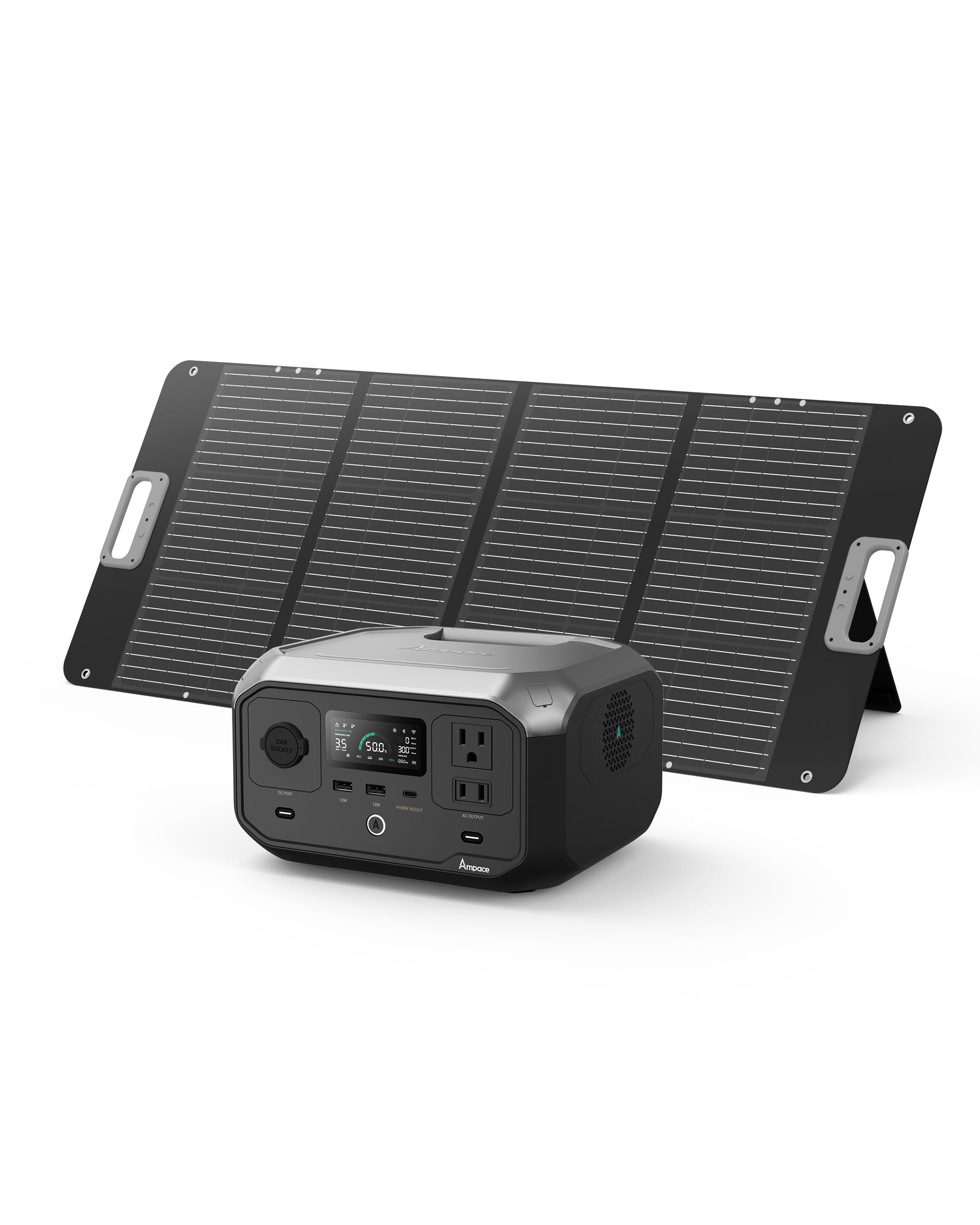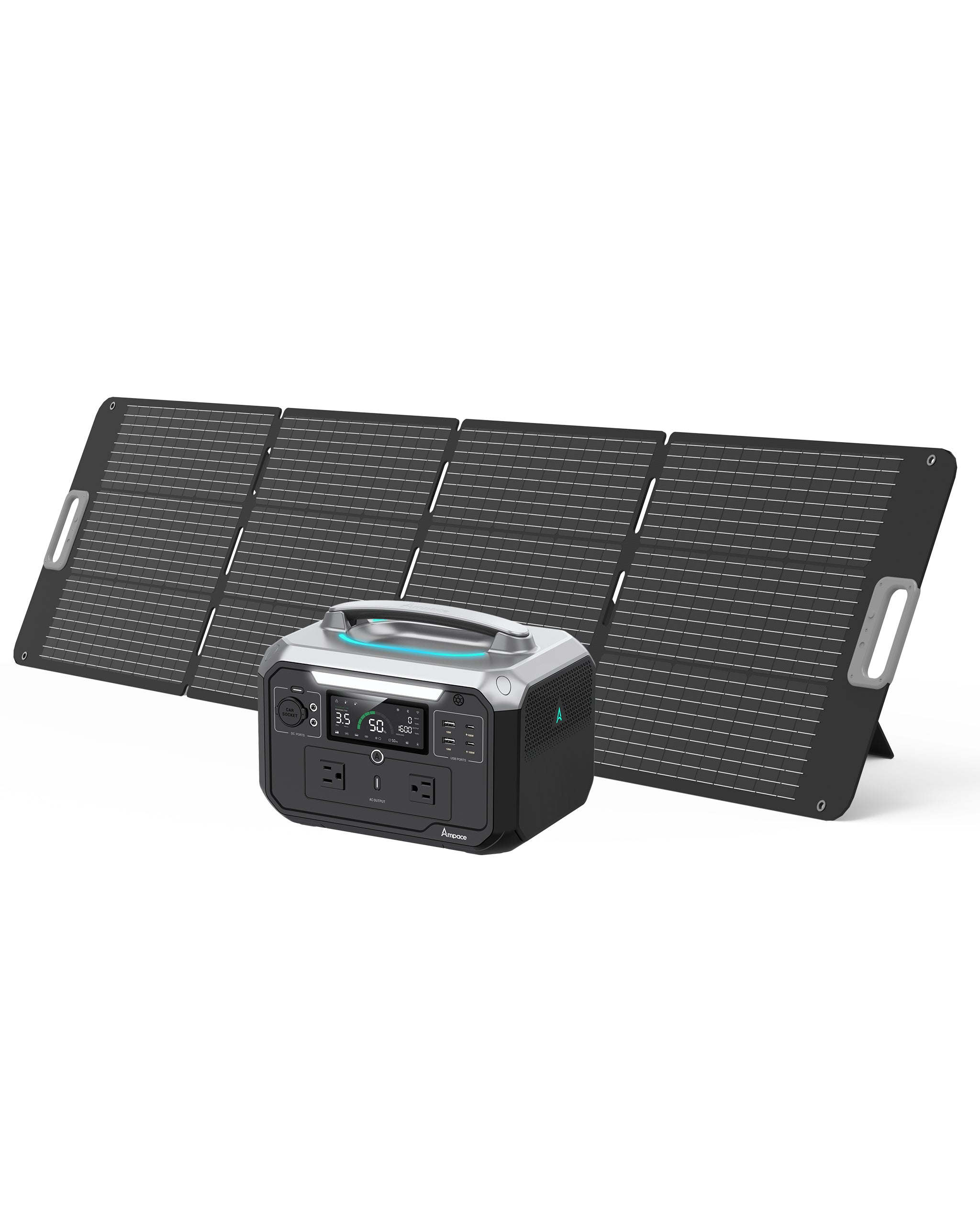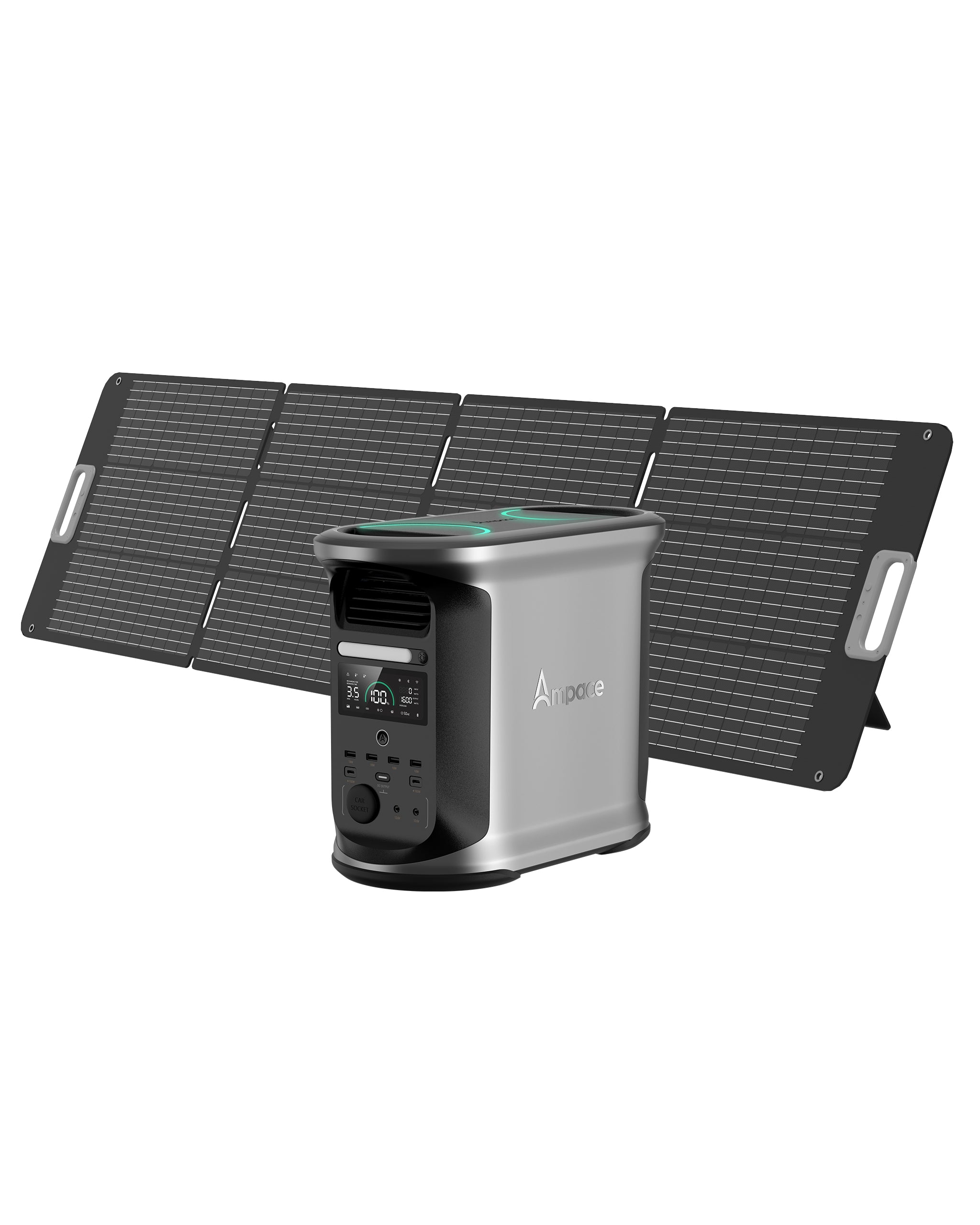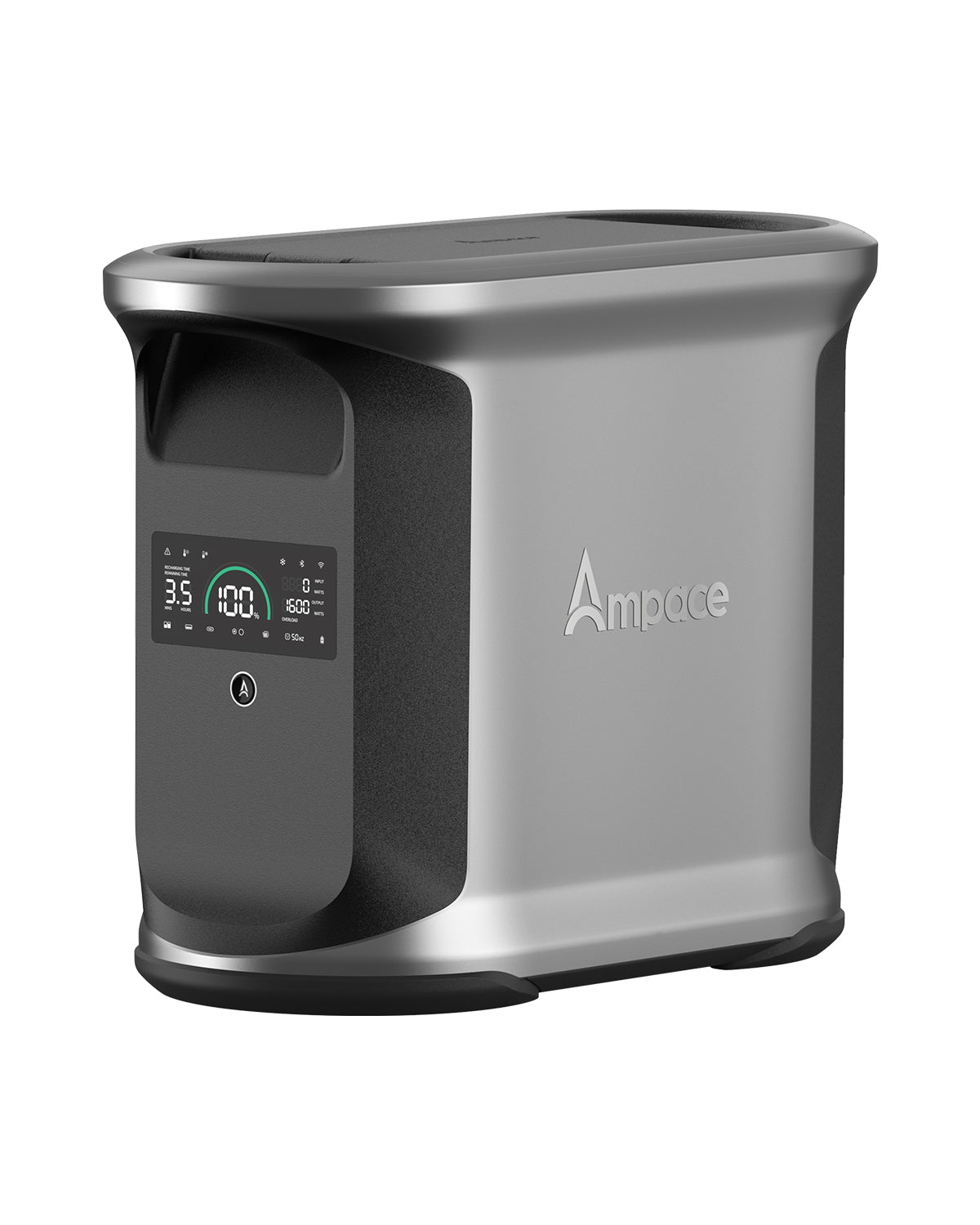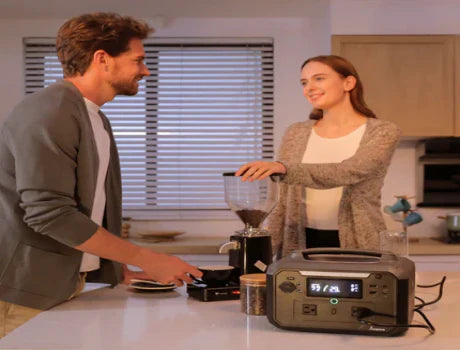Emergency Power Buying Guide: What to Look For?

Table of Contents
No one enjoys the darkness and helplessness that come with a power outage, which often strikes without warning. To prevent food spoilage in your fridge, keep your electronic devices connected, and ensure your lighting system remains functional, we recommend preparing a high-capacity emergency power supply. It offers your home a tangible sense of security. Ampace emergency power solutions keep you powered up and prepared.
What Is an Emergency Power Supply?
An emergency power supply is a backup power source that steps in when the grid fails, providing continuous electricity during outages. Advanced emergency power supplies even support solar charging, ensuring stable power during prolonged outages, making them ideal for homes, outdoor activities, commercial settings, and emergency situations.
Typically composed of generators, batteries, and other equipment, an emergency power supply kicks in when the primary power source fails, protecting lives and property. It functions as an uninterruptible power supply (UPS) or backup power source, ensuring critical devices remain operational.
What Are the Benefits of an Emergency Power Supply?
Investing in a high-performance emergency power supply isn’t just about handling unexpected outages—it also brings convenience to daily life and work:
- Uninterrupted Daily Life: Even during a grid outage, your fridge, router, lights, and phone can continue running, keeping your routine intact.
- Protecting Critical Equipment: For power-dependent medical devices (like ventilators or insulin pumps), an emergency power supply prevents damage due to power cuts.
- Handling Extreme Weather and Disasters: During typhoons, heavy rain, earthquakes, or other emergencies, an emergency power supply becomes a vital survival tool, supporting lighting, communication, and basic needs.
- Supporting Outdoor and Remote Work: Whether at a campsite, in a vehicle, or at a remote construction site, emergency power supplies provide reliable electricity for diverse needs.
- Eco-Friendly Options: Many modern emergency power supplies support solar or rechargeable batteries, reducing reliance on traditional fuels and promoting a greener, low-carbon lifestyle.

Types of Emergency Power Supplies
When choosing an emergency power supply, understanding the features and use cases of different types is crucial. Below, we compare two common options: propane generators and solar generators.
Propane Generator
Propane generators run on liquid propane gas (LPG) and are a traditional, reliable choice for emergency power. They’ve been widely used for decades in both residential and commercial settings due to their consistent performance and high power output. Here are their key features:
Advantages:
- High Power Output: Propane generators typically deliver high wattage, suitable for powering large appliances or an entire household.
- Long Runtime: With sufficient propane fuel, they can run for hours or even days.
- Reliable Performance: Unaffected by weather or light conditions, they’re ideal for various environments.
- Easy Fuel Storage: Propane tanks are convenient to store, and the fuel has a long shelf life, perfect for long-term backup.
Disadvantages:
- Noise and Emissions: Propane generators produce noise and exhaust fumes, making them unsuitable for indoor use and less environmentally friendly.
- Fuel Dependency: They require regular fuel refills, which can add costs and safety concerns for storage and transport.
- Higher Maintenance: Regular maintenance, such as oil changes and part cleaning, is needed for reliable operation.

Solar Generator
Solar generators convert sunlight into electricity via solar panels, storing it in built-in batteries. As clean, quiet, and sustainable power solutions, they’ve become increasingly popular for both home emergency use and off-grid adventures.
Many modern solar generators can deliver up to 2,400W of continuous output and 3,600W surge power, making them capable of running essential appliances like refrigerators, power tools, and medical devices. They’re an eco-friendly emergency power option. Here are their key features:
Advantages:
- Eco-Friendly: Powered by renewable energy, they produce no noise or emissions, making them suitable for indoor and outdoor use.
- Low Operating Costs: No fuel is required, just sunlight, resulting in minimal long-term costs.
- Portability: Many solar generators are lightweight and designed for easy transport, ideal for camping or travel.
- Low Maintenance: They require minimal upkeep, typically just keeping the solar panels clean.
Disadvantages:
- Weather-Dependent: Charging is less effective on cloudy days or at night, limiting power output.
- Higher Initial Cost: Solar generators and panels can be expensive to purchase upfront.
- Limited Power Output: Compared to propane generators, solar generators typically have lower wattage, unsuitable for high-power devices.

Propane Generator vs. Solar Generator: Which to Choose?
|
Feature |
Propane Generator |
Solar Generator |
|
Energy Source |
Propane fuel |
Solar energy |
|
Power Output |
High, suitable for large devices |
Lower, best for small devices |
|
Operating Cost |
Higher due to fuel and maintenance |
Near-zero operating cost |
|
Eco-Friendliness |
Produces noise and emissions |
No noise or emissions, eco-friendly |
|
Portability |
Heavier, less portable |
Lightweight, highly portable |
|
Use Cases |
Long outages, high-power needs |
Outdoor activities, short outages |
Choosing the Right Option:
- If you live in an area prone to extended outages or need to power high-wattage devices (like air conditioners or refrigerators), a propane generator is likely the more reliable choice.
- If you prioritize eco-friendliness, portability, and low maintenance, or need power for outdoor activities or short-term emergencies, a solar generator is ideal.
- Hybrid Approach: Some users opt for both propane and solar generators to cover different scenarios. For example, a solar generator for daily small devices and a propane generator as a backup for prolonged outages.
Ampace Solar Generators for Emergencies
Ampace is committed to providing reliable emergency power solutions for all households. Ampace solar generators combine portable power stations with Ampace solar panels, offering a clean and sustainable energy solution during emergencies. All Ampace power stations deliver pure sine wave output and stable voltage to ensure the safe operation of all your appliances. The high-capacity batteries help you get through every power outage with ease.
Ampace Andes 1500
Ampace Andes 1500 is a high-capacity portable power station with a massive 1,462 Wh battery and 13 output ports, ready to charge multiple devices at once. Paired with a portable solar panel, it allows you to achieve energy self-sufficiency.
In addition, the Ampace Andes 1500 supports external battery expansion. When you connect an expansion battery to the Andes 1500, the usable battery capacity reaches 2,924 Wh. One Andes 1500 can connect up to seven expansion batteries, offering a maximum expanded capacity of 11 kWh—perfect for home emergencies and long-term power outages.

Ampace Andes 600 Pro
The Ampace Andes 600 Pro is a good option for outdoor enthusiasts. Equipped with a 584Wh battery capacity and 9 versatile output ports, it’s capable of powering a wide range of devices.
The Andes 600 Pro features a LiFePO₄ (LFP) battery with a lifespan of 10 years. Even after more than 2,000 cycles, it can still retain 80% of its capacity. It supports powering devices such as CPAP machines, making it a reliable companion for both health-related needs and everyday backup power.

FAQ
What is a personal emergency evacuation plan?
A personal emergency evacuation plan (PEEP) is a customized safety strategy that outlines how an individual—especially someone with mobility or health challenges—can safely exit a building during an emergency like a fire or power outage. It includes escape routes, assistance roles, and communication procedures.
What size emergency generator do I need?
To determine the right emergency generator size, add up the wattage of essential appliances. For basic use (lights, phone, router), 500–1,000W is enough. If you need to power a fridge, microwave, or medical devices, aim for 1,500–3,000W. For whole-home backup during long outages, consider a generator over 5,000W.
How does an emergency action plan benefit your workplace?
An emergency action plan (EAP) enhances workplace safety by outlining clear procedures for evacuation, communication, and emergency response. It helps employees act quickly and confidently during fires, power failures, or natural disasters—reducing injuries, confusion, and business downtime.
What is the best emergency solar generator for home use?
The best emergency solar generator offers high battery capacity (1,000Wh or more), fast solar charging, pure sine wave output, and multiple ports. Models like the Ampace Andes 1500, with 1,462Wh capacity and expandability up to 11kWh, are ideal for powering fridges, medical equipment, and home electronics during outages.





